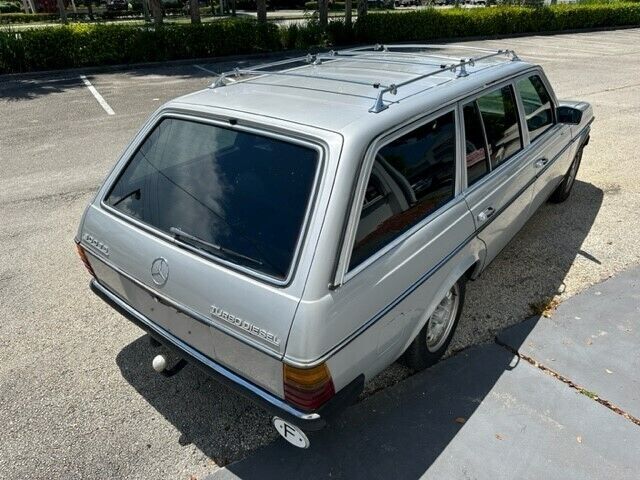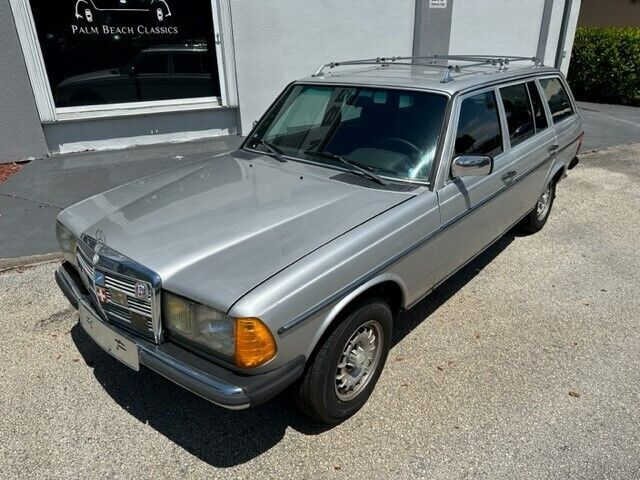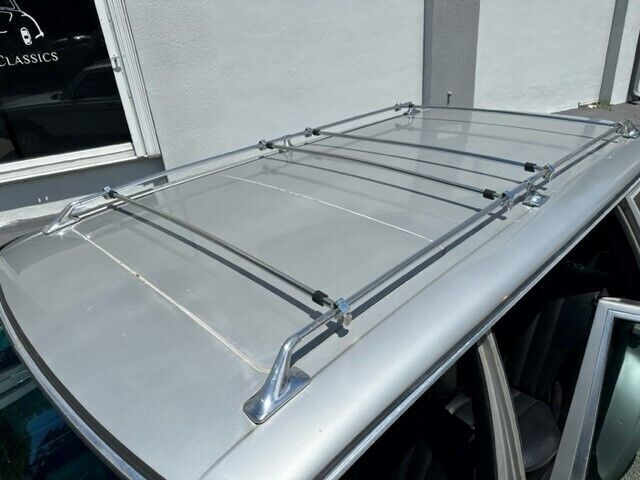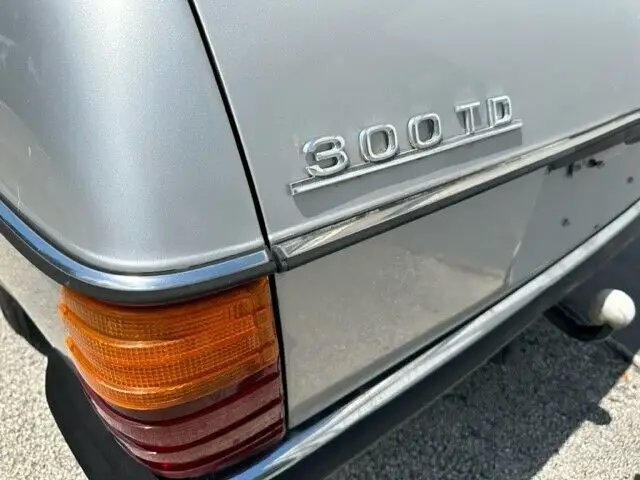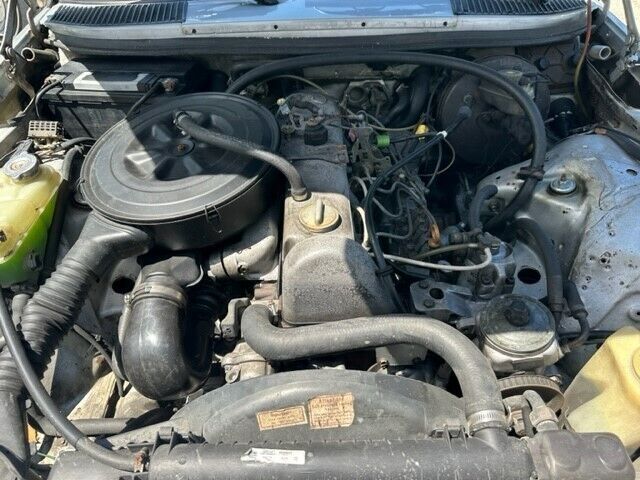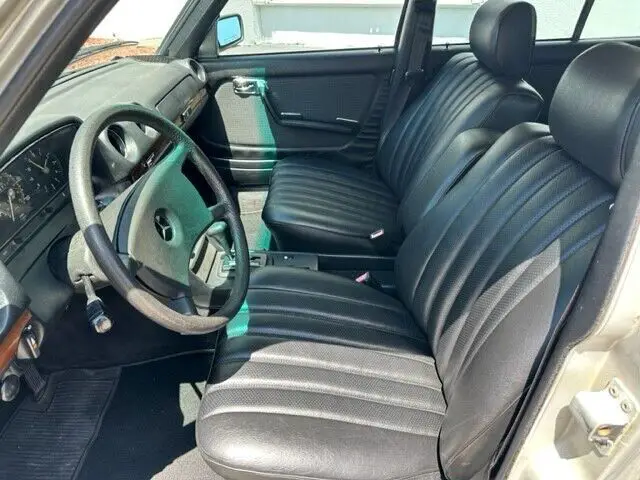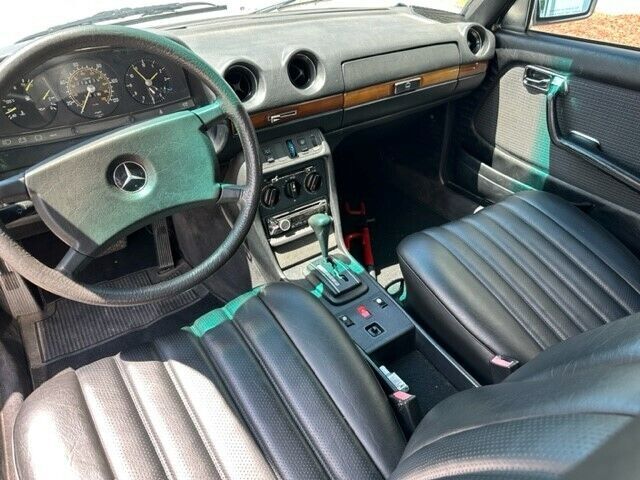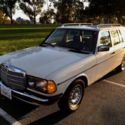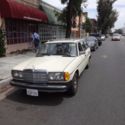1984 Mercedes-Benz 300TD Euro
| Make: | Mercedes-Benz |
| Model: | 300TD |
| Type: | Wagon |
| Doors: | 4 |
| Year: | 1980 |
| Mileage: | 014839 |
| Color: | Silver |
| Interior color: | Black |
| Vehicle Title: | Clean |
| Item location: | West Palm Beach, Florida, United States |
1980 Mercedes-Benz 300TD Additional Info:
1984 Mercedes-Benz 300TD(Euro version)Production: 28,219 units (123.193)
VIN:WDB1231931F024999 (European)
This is an excellent driver, with a strong chassis. Service recently done by Palm Beach Classics, this wagon is a European version and when it arrived to the United States, the DMV had the owner replace the speedometer. It is not uncommon for this to happen in some states. We cannot verify the mileage nor will try to assume its true mileage, so it is listed as 014,839 TMU.
Looking at the engine and when it was serviced at Palm Beach Classics, we could determine that his is not a high mileage vehicle. The interior is excellent, the two front seats were redone. The rear extra trunk seats were added as an option as well as the roof luggage bars. The photos show the badges on the grille and they do not come with the car.
We welcome inspections by appointment, we can also assist in shipping the vehicle worldwide.
Contact us if you have any questions.
We are a FL license dealer and we have a $245 processing and document fee. After the vehicle is purchased, it must be picked up within 5 days. Storage fee is available upon request. All documents must be signed and notarized before the vehicle is picked up.
__________________________________________________________________
TheMercedes-Benz W123is a range ofexecutive carsproduced by German manufacturerMercedes-Benzfrom November 1975 to January 1986. The W123 models surpassed their predecessor, theMercedes-Benz W114, as the most successful Mercedes, selling 2.7 million units before production ended in the autumn of 1985 for the saloon/sedan versions and January 1986 for coupés and estates/station wagons.[4]
Following a slow production build-up during the first year, customers who placed their orders faced a lengthy waiting period of nine to twelve months. A black market emerged for the customers who were willing to pay more for immediate delivery. The slightly used W123 commanded about 5,000Deutsche Markpremium over its original sale price.[5]
Like its predecessors, the W123 gained the reputation of being well built and reliable. Many taxi companies chose the W123, and they were a common sight in Germany. Reaching 500,000 or 1,000,000km with only minor mechanical issues was common with W123s used as taxicabs.[citation needed]Once the W123 reached the end of its service life, they were often shipped to Africa and third world countries where they were highly esteemed for their ability to travel on rough roads and to not require frequent maintenance.[6]
All engines from the W114/W115 are carried over. The single new engine was theSOHC2.5-litreM123inline six. The 3-litre, five-cylinder diesel engine received a proper nomenclature for the W123, matching the engine displacement: 300D instead of 240D 3.0 on the previous W114/W115.
In the autumn of 1978, the power output of the 240D was increased from 65PS (48kW; 64hp) to 72PS (53kW; 71hp) and of the 280E from 177PS to 185 PS. In early 1979, the power output rose from 55PS (40kW; 54hp) to 60PS (44kW; 59hp) for the 200D and from 80PS (59kW; 79hp) to 88PS (65kW; 87hp) for the 300D. The 220D was discontinued after 1979.[7]
In June 1980, the newM102four-cylinderinline petrol engine replaced theM115. The 2-litre version was only available with a carburetor while the 2.3-litre version was available with fuel injection only. The carbureted version of 2.8-litreM110engine in the 280 and 280C was discontinued in 1981 leaving the 250 as the sole carbureted six-cylinder inline engine.[7]
The world's first turbocharged diesel engine for a passenger vehicle, theOM617 A, was finally introduced in W123 models in September 1979, exclusive to the 300TD Turbodiesel for the European market. The same engine was offered in North America and Japan in 1981 as the 300D Turbodiesel, 300CD Turbodiesel, and 300TD Turbodiesel.[7][11]
The engines in the W123 were mounted with small shock absorbers in addition to industry standard motor mounts to reduce felt vibration and a provide a smoother ride. These designs were carried over from previous chassis models like the W114/W115.
